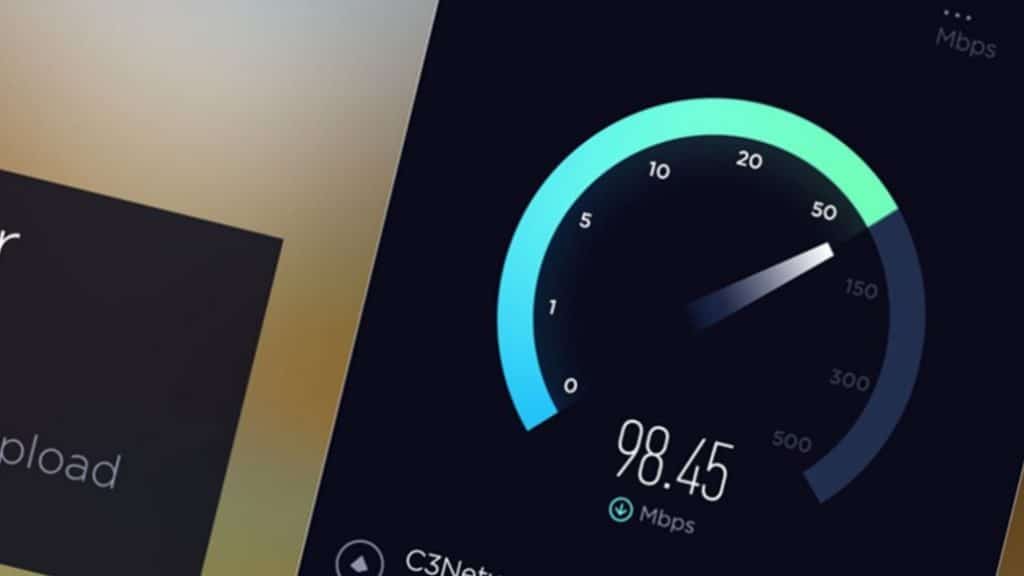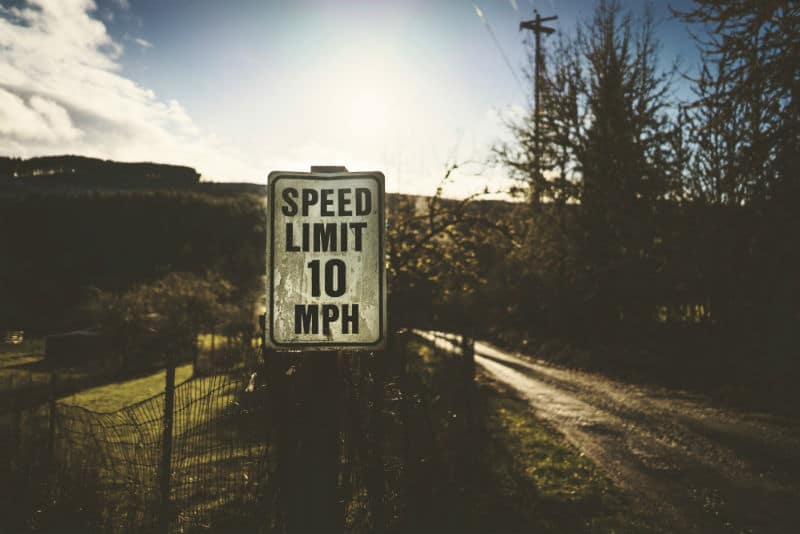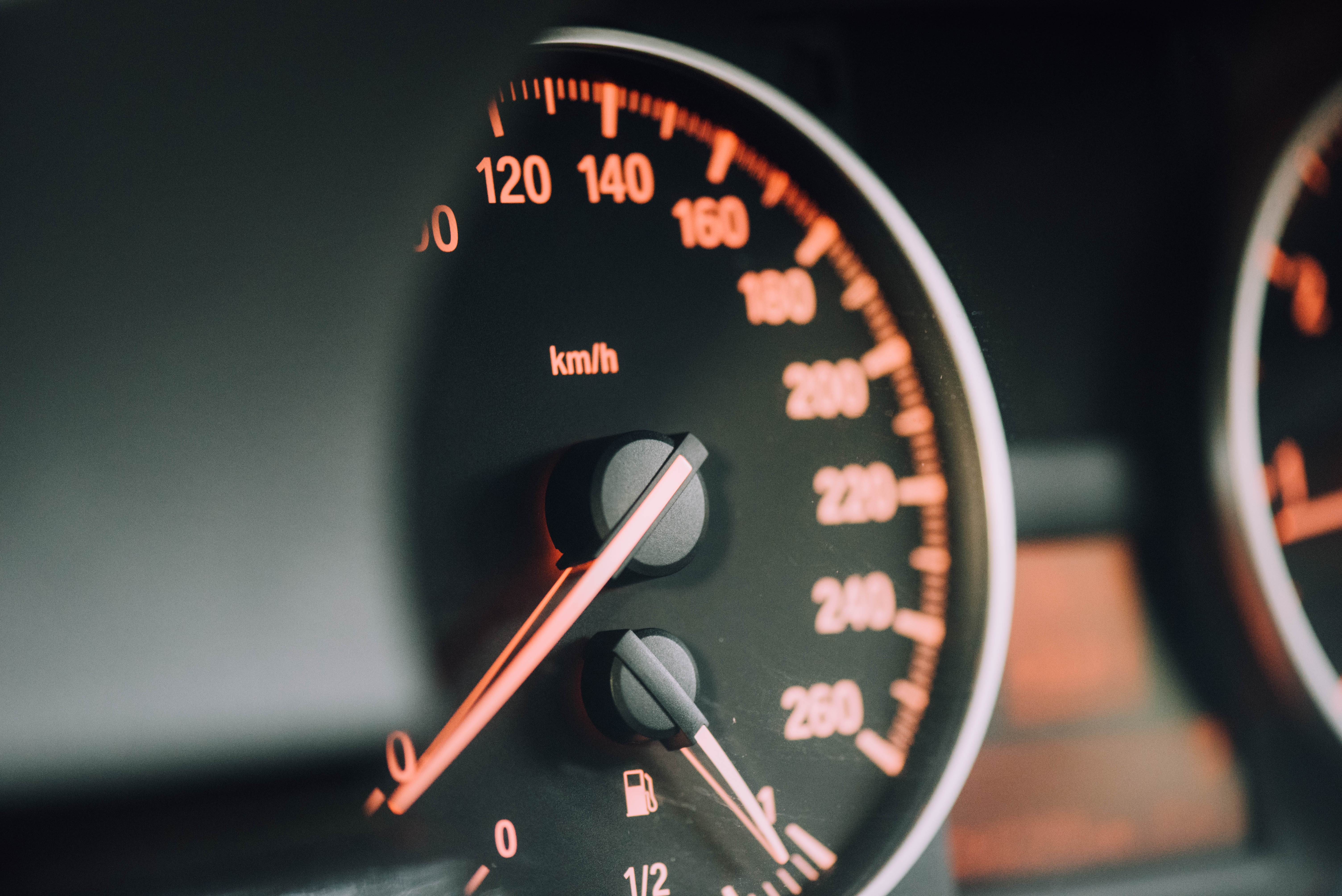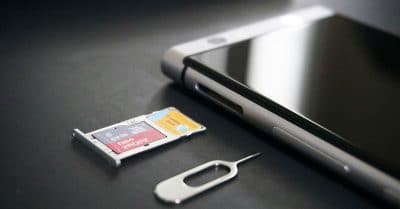A Guide to Mobile Download Speeds: 2G, 3G, 4G and 5G. What Do They Actually Mean?
2G? 3G? 4G? 5G?! Ever wonder what all those things mean? Mobile download speed is kind of a big deal, especially if you like streaming videos or playing games on your phone. And even if you’re just into surfing the web, those speeds have a big impact on your experience. But what are all of these numbers? How do they impact what you’re doing on your phone? We’re taking a look at mobile download speeds, and we’ve got everything you need to know right here.
How We Measure Speed
Before we get into details we should start off by explaining some of the terminologies you’re going to come up against in this article. You’re going to be seeing a lot of abbreviations for different speeds, and it’s important that you understand them.
You might be familiar with how data is measured, with abbreviations like kb, Mb, and GB, or even TB. Data is measured in bits. 1000 kilobits (kb) equals 1 megabit (Mb). 1000 megabits (Mb) equals 1 gigabit (GB). When we’re measuring speed we talk about how much data can be moved per second. Speeds of 1 kbps (1 kilobit per second) are crazy slow, whilst speeds of 1GBps (1 gigabit per second) are crazy fast. 200 kpbs (kilobits per second) is a lot slower than 200 Mbps (megabits per second), which is a lot slower than 200 Gbps (gigabits per second).
Kbits, Mbits, Gbits Explained
There are 1,000 kilobits in a megabit (1000kbit = 1Mbit) and 1,000 megabits in a gigabit (1,000Mbit = 1Gbit). In terms of speed, this means that a 1Mbit/s internet connection is twice as fast as a 500kbit/s connection.
Most download speeds are shown in megabits per second (Mbits) as these are the most common speeds we see and experience on a day to day basis. Older 2G connections are usually specified in kbit/s.
As speeds get faster, we'll start to see 5G connections shown in Gbit/s that's because the expected download speed for 5G technology is 1-10Gbit/s).
Remember do not confuse bits and bytes. As we have explained download speeds are normally measured in “megabits per second” (abbreviated to Mbits). However, download limits and files sizes are measured in megabytes (MB). There are 8 bits in one byte (and 8 megabits in one megabyte). For example, it would take you 8 seconds to download a 1MB file on a 1Mbit/s connection.
2G vs. 3G vs. 4G vs. 5G

When you buy a mobile phone somewhere in the specs it will tell you if it’s 2G, 3G, or 4G, or a combination of all of these. The G in these phrases simply refers to “generation.” 2G is the oldest tech, 3G came along a little later, and 4G is the current top of the line tech. 2G service was the basic service that allowed us to have mobile phones in the first place. A 2G only phone will be slow, but it will be able to make calls and send texts, though it won’t be able to access the internet as we know it.
When 3G came along, we got a new generation of phones that we called smartphones, phones that were able to connect fully to the internet. Modern smartphones all have 3G, allowing you to go online. Speeds are much faster than with 2G, but in areas with bad reception, your phone may still drop down to a 2G connection sometimes (which is why sometimes you can’t access the internet but you can still make calls).
Finally, 4G arrived. 4G signals are far faster than older 3G signals, meaning we can flip between web pages faster, we can stream video in higher quality, and we can play high-end online games. Most, though not all, mobiles sold nowadays have 4G tech, though not all operators supply 4G service, and some operators make you pay extra for it. If you want 4G internet speeds you’ll need not just a phone that’s capable of using 4G, but also a phone plan that includes 4G with an operator that has a 4G network. 4G+ is simply a slightly faster version of 4G.
2G tech is the oldest mobile tech that we have, and some operators are beginning to close their 2G networks. Three, for example, no longer has a 2G network, so phones on Three will use only 3G or 4G networks.
5G will be the next generation of mobile tech, and it promises far faster download speeds than even 4G. However, it is not yet available in the UK (or really anywhere).
Mobile Coverage

Different operators in the UK get different coverage with each of these signals (2G, 3G, 4G). Nearly all operators get above 95% coverage across the country for 2G and 3G, though 4G coverage varies a little more (and is non-existent with some smaller operators). You can easily check in which areas you’ll get service for 2G, 3G, or 4G using the OFCOM coverage checker. It’s always worth doing this before signing up with a new operator, just to check that you’re going to be able to get reception and the kinds of speeds you’re looking for.
How Fast is Fast?
How fast you’re moving data around on your phone kind of depends on exactly what kind of tech your phone is using. Even within each of the generations, there are different ways of receiving a signal. A 3G phone, for example, may use 3G, HSPA, HSPA+, or DC-HSPA+ tech to get service. If you look in your phone’s manual (or Google the specs of your phone or phone you’re thinking about buying) you should be able to find out what kind of tech it’s using (usually under a heading like “network technology”).
You also may be able to tell which kind of tech you’re using from your phone itself since most phones have a small icon next to the signal bar telling you which tech you’re currently running. Below you’ll find a list of different techs and their top and average speeds, along with which icon your phone shows if it’s running that tech.
2G Service
2G is the slowest kind of phone service and there are two kinds of tech that your phone could be running:
- GPRS: Icon shows G, maximum speeds of 0.1 Mbps, average speeds of less than 0.1 Mbps
- Edge: Icon shows E, maximum speeds of 0.3 Mbps, average speeds of 0.1 Mbps
3G Service
If you’ve got 3G service then congratulations, you now have a smartphone! There are lots of different 3G technologies, which means there’s plenty of variation in 3G speeds:
- 3G: Icon shows 3G, maximum speeds of 0.3 Mbps, average speeds of 0.1 Mbps
- HSPA: Icon shows H, maximum speeds of 7.2 Mbps, average speeds of 1.5 Mbps
- HSPA+: Icon shows H+, maximum speeds of 21 Mbps, average speeds of 4 Mbps
- DC-HSPA+: Icons shows H+, maximum speeds of 42 Mbps, average speeds of 8 Mbps
4G/4G+ Service
If you’re running 4G then you’re getting pretty fast download speeds, but again, there are various different technologies that your phone can have that will impact your speeds:
- LTE Category 4: Icon shows 4G, maximum speeds of 150 Mbps, average speeds of between 12 and 15 Mbps
- LTE-Advanced Category 6: Icon shows 4G+, maximum speeds of 300 Mbps, average speeds of between 24 and 30 Mbps
- LTE-Advanced Category 9: Icon shows 4G+, maximum speeds of 450 Mbps, average speeds around 60 Mbps
And the Rest
There are also a couple of other technologies that aren’t commonplace yet but are beginning to be seen. LTE-Advanced Category 12 promises speeds of up to 600 Mbps, and LTE-Advance Category 16 promises speeds of up to 979 Mbps. It’s unlikely that you will have either of these on your phone, though the latest iPhone and Samsung Galaxy models both feature Category 16 tech.
And what about that brand new 5G tech? Well, that’s currently predicted to offer speeds of between 1 and 10 Gbps, so it’s going to be very fast indeed.
Quick Overview Table
| Type of Connection | Icon You See On Your Smartphone | Technology | Maximum Download Speed | Real World Download Speed |
|---|---|---|---|---|
| 2G | G | GPRS | 0.1Mbit/s | <0.1Mbit/s |
| E | EDGE | 0.3Mbit/s | 0.1Mbit/s | |
| 3G | 3G | 3G (Basic) | 0.3Mbit/s | 0.1Mbit/s |
| H | HSPA | 7.2Mbit/s | 1.5Mbit/s | |
| H+ | HSPA+ | 21Mbit/s | 4Mbit/s | |
| H+ | DC-HSPA+ | 42Mbit/s | 8Mbit/s | |
| 4G | 4G | LTE Category 4 | 150Mbit/s | 12-15Mbit/s |
| 4G+ | 4G+ | LTE-Advanced Cat6 | 300Mbit/s | 24-30Mbit/s |
| 4G+ | LTE-Advanced Cat9 | 450Mbit/s | 60Mbit/s | |
| 4G+ | LTE-Advanced Cat12 | 600Mbit/s | Unconfirmed | |
| 4G+ | LTE-Advanced Cat16 | 979Mbit/s | Unconfirmed | |
| 5G | 5G | 5G | 1,000-10,000Mbit/s | Unconfirmed |
Operator Restrictions…
Just because your phone has a certain technology though doesn’t mean that you’ll actually be able to use it. In the UK, mobile data speeds are relatively slow compared to other countries. This is due to the infrastructure built and owned by operators, and there’s no way to improve these speeds without new infrastructure.
Of the major networks, currently, EE and Vodafone offer LTE-Advanced Category 9 speeds as their maximum, and O2 and Three offer LTE-Advanced Category 6 speeds as their maximum. So even if you have a brand new iPhone with Category 16 speeds you won’t be able to use those speeds on any UK operator.
What Does Speed Get Me?

The faster your connection speed, the faster your phone should be able to perform online actions. It’s really that simple. A faster connection means faster loading web pages, high-quality video streams, and overall faster downloads. And there’s quite a difference between each of the common signals.
General Internet Use
When it comes to general internet use, the approximate times you’re looking at to perform different actions are:
- Sending an Email: 1 second on 2G, less than 0.1 seconds on 3G, less than 0.1 seconds on 4G
- Opening a Webpage: 3 minutes on 2G, 4 seconds on 3G, 0.5 seconds on 4G
- Downloading an MP3 Track: 7 minutes on 2G, 10 seconds on 3G, 3 seconds on 4G
- Downloading an App: 40 minutes on 2G, 1 minute on 3G, 8 seconds on 4G
Streaming Use
If you’re streaming then a higher speed simply means a higher quality stream, with no buffering and a clearer picture. However, there are minimum speed requirements for streaming. Depending on what you want to do, here are the minimum speeds you’ll need to achieve in order to stream:
- Call Using Skype/WhatsApp/Viber: at least 0.1 Mbps
- Video Call Using Skype/WhatsApp/Viber: at least 0.5 Mbps
- Watching YouTube: at least 0.5 Mbps
- Watching YouTube with 720p HD Quality: at least 2.5 Mbps
- Watching YouTube with 1080p HD Quality: at least 4 Mbps
- Watching iPlayer or Netflix: at least 1.5 Mbps
- Watching iPlayer or Netflix in HD: at least 5 Mbps
- Watching iPlayer or Netflix in 4K UHD: at least 25 Mbps
Add-In Latency…
Latency, or lag, is a speed issue that affects everything that you’re doing online. Basically, lag is the amount of time it takes your device to connect to the server (the place where you’re downloading or streaming from). The newer your mobile tech, the shorter that latency period will be:
- With 2G tech, latency is around 0.5 seconds
- With 3G tech, latency is around 0.1 seconds
- With 4G tech, latency is around 0.05 seconds
You’ll need to add latency time to the amount of time it takes to download or stream something.
And Network Traffic…
Another issue that will affect your speeds has nothing to do with what kind of technology you’re running, and that’s network traffic. The more users that are connected to a signal, the slower that signal becomes. Think of it as a road. You can drive as fast as the speed limit on an empty road, but once other cars start appearing your speed goes down and down, until finally, you’re stuck in a jam. Network signals work in the same way. This is why speeds might be slower in cities where there are more users, or at certain times of the day when more people are likely to be using the network.
For a long time one of the many reasons 4G was so much faster than 3G was simply because fewer people had 4G devices. This is no longer true as a general rule since many people nowadays have 4G. But when 5G becomes available this will be true again, since few people will initially have 5G devices or even a 5G phone plan.
Your Download Speed and Your Download Limit

If you’ve got a mobile phone plan then chances are that you’ve got a monthly limit for how much data you’re allowed to use. Theoretically, getting faster speeds shouldn’t affect how much of your data you’re using. Accessing a webpage uses around 1.3 Mb of data, and it doesn’t matter whether you’re accessing that page on 3G speeds or superfast 4G+ speeds, it still uses the same amount of data (though you’ll see the page more quickly using 4G+).
In real life, however, there is a chance that your download speeds could affect your download limit. Firstly, this is because access to a faster internet connection often tempts people into using the internet more, into downloading more online games, or streaming more video, simply because these things are easier on a faster connection.
Another reason is because some websites use adaptive technology. For example, YouTube automatically chooses the quality of a video depending on what speeds it thinks your phone can handle. If you’re on an old phone with regular 3G connectivity YouTube may choose Standard Definition by default. Upgrade to a new phone with 4G connectivity and YouTube may begin choosing High Definition by default instead. Better quality video streams use up more data, so you may end up reaching your monthly data limit faster even though you haven’t changed your phone habits.
If you’re switching to a new, faster phone, or switching from a 3G mobile plan to a 4G one, it’s always worth keeping an eye on your usage for the first month or so, just to ensure that your new faster speeds aren’t causing you to use up your data faster and therefore potentially meaning you have to pay extra charges for more data.
Improving Your Mobile Data Speeds
You can improve your mobile data speeds, if you’re looking to watcha higher definition video, for example, or if you simply want faster internet access. However, for the most part, this is probably going to cost you cash. Here are a few things you can try:
- Getting a new phone. Yes, pricey. But if you’re running older tech like a feature phone your download speeds are naturally going to be slower.
- Upgrading your phone contract. If you’re still on a 3G contract, you might want to consider upgrading to a 4G contract if you can, this will certainly mean faster speeds (as long as you have a 4G capable phone).
- Changing operators. Different networks have different coverage and different maximum speeds. Going with another operator, if possible, may mean faster speeds.
- Changing location. Speeds can depend on how close you are to the source of your signal. Even moving to a different room in the house can effect how strong, and therefore how fast, your download speeds are.
- Disable background apps, antivirus, or VPNs that may be stealing some of your download speeds. If other apps are also using the internet, then your speeds will be slower on the app you actually want to use. You can also try clearing out the cache on your phone to try and improve speeds.
- Restarting your phone. Yep, something this simple could improve your speeds, at least occasionally.
- Change web browsers. If you’re dissatisfied with web surfing speeds, sometimes switching to a smaller footprint browser (like Opera Mini, for example) can improve speeds.
Not Getting Good Speeds from Your Operator?
Finally, if you not seeing decent speeds (i.e. nowhere close to the average that you would expect from the kind of tech that you’re running), it’s always a good idea to contact your mobile operator. They may be willing to help you out by providing devices or apps that can improve your mobile reception and therefore your speeds. They may also be able to inform you about network maintenance or changes that may be effecting your speeds (or may improve them soon). And in some cases, they may even be willing to let you cancel your contract in order to sign up with another operator if they can’t provide you with the kind of service you’re expecting.




